The article aims to help a practicing professional navigate the jungle of structural engineering software. It creates a list of 10 software which is meant to help you choose which structural engineering software to invest in within your context and interests.
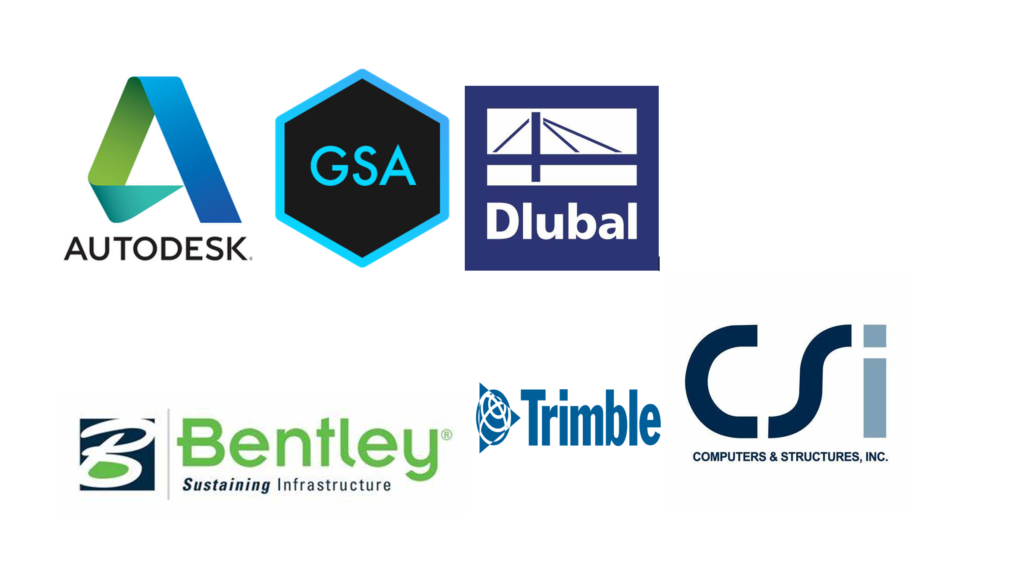
Today, computer-aided design, or CAD has become a mainstream tool amongst engineers. For structural engineers, designing structures today is not a pushover without the several software applications that allows them to carry out their analysis and design in no time and with accuracy. Rightly so, projects that could typically require between weeks to months to analyze and design using the traditional hand calculation methods can now be completed within minutes to few hours. And in fact, schemes that couldn’t be designed due to the complexity of their geometry or type of analysis involved can now be completed by creating models using Sofware.
Structural engineers now have a litany of software packages to choose from. As there are numerous options available in the market, depending on the type and nature of the structure they intend to design, or the software their employer offers, or their own preferences.
It is worth stating however, that there is still no ‘one size fits all’ structural engineering software package, just as no software can be declared as the ‘best.’ Answers posited to questions about the best software are always very subjective; and often borne out of a position of preference or bias. In reality, the “best” software is the one that is able to cater to your requirements as a designer. Thus, the very versatile structural engineer would often find themselves switching between software packages in order to meet varying requirements. For instance, while a software might have non-linear or finite element analysis capabilities, its capacity might be limited to only building structures.
Even in today’s climate where there are several software packages with seemingly similar capabilities, the choice of engineers still boils down to preference. And how do you even determine preference? Perhaps by looking at the percentages of software market share. However, the licensing options for most of this structural engineering software tend to be prohibitively pricey for individual users. Hence, market share of a software may not be a reliable reflection of user preferences, as most users simply make do of what is available or what they can afford.
For the above-stated reasons, this article doesn’t attempt to rank engineering software. The aim of the article is to help a practicing professional navigate the jungle of structural engineering software. This top 10 list is meant to help you choose which structural engineering software to invest in within your context and interests.
SAP 2000
Developed by Computers and Structures, Inc. (CSI), SAP2000 has been a stalwart in the structural engineering software domain for years. Renowned for its robust finite element analysis (FEA) capabilities, SAP2000 is designed for modelling and analyzing complex structural systems. Its biggest strength lies in its handling of a spectrum of load cases, dynamic analysis, and nonlinear behaviour, making it an indispensable tool for structural engineers working on intricate projects like high-rise buildings, bridges and shell structures.
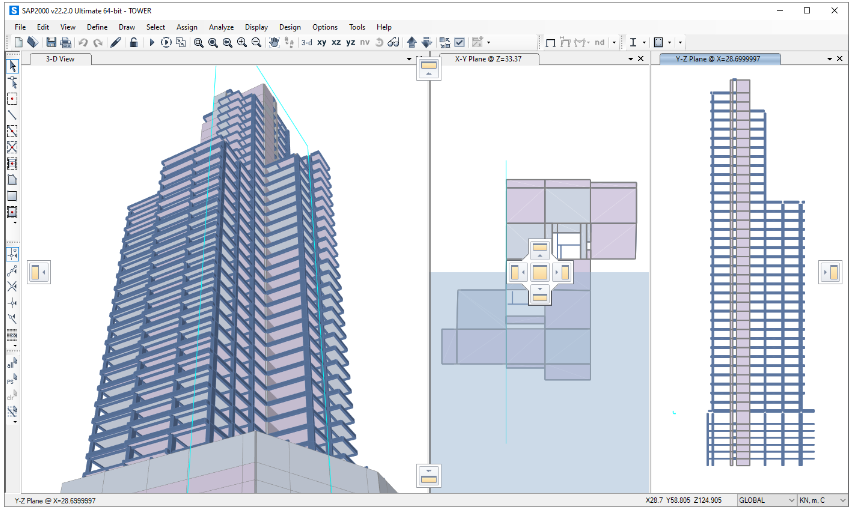
SAP2000 provides a unified user interface for modelling, analysis, design, and reporting. The SAP2000 interface (Figure 1) is fully customizable, allowing users to specify window and toolbar configurations. It also covers a comprehensive range of code-based design elements for steel frame, concrete frame, cold form steel, and aluminum frames.
More information on SAP2000 is obtainable from: SAP2000 Features | STRUCTURAL ANALYSIS AND DESIGN (csiamerica.com)
ETABS
ETABS is another software from Computers and Structures, Inc. It is very similar to SAP2000. However, while SAP2000 is suited for all kind of structures, ETABS is celebrated for its specialization in the analysis and design of building structures. With features like advanced building modelling, seismic analysis, and design optimization.
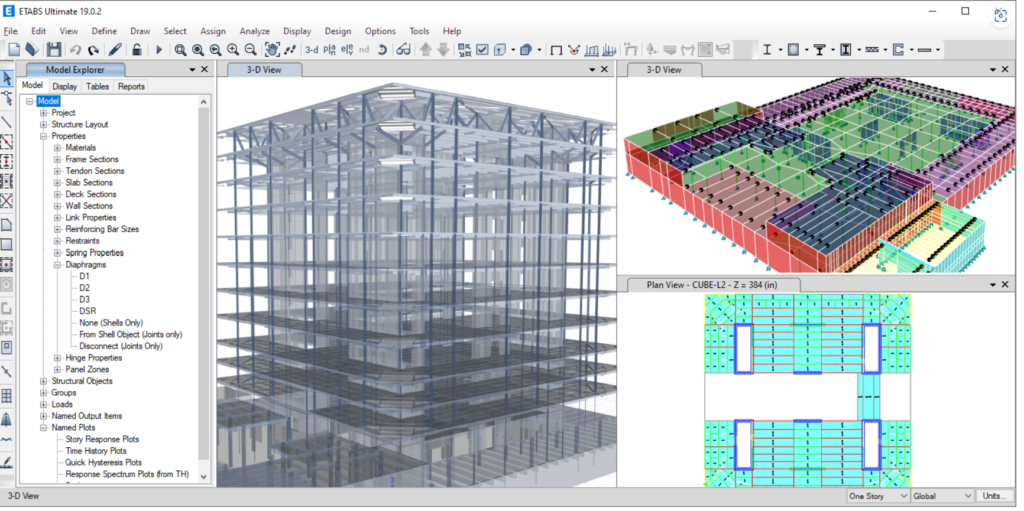
ETABS is a tailor-made software for engineers working on high-rise structures and complex architectural designs. Its capabilities extend beyond mere analysis, contributing significantly to the entire structural design process. ETABS can import and export models to and from other software, enhancing interoperability in the design process. It’s also a parametric design powerhouse as users can define and modify parameters to create parametric variations of a model, facilitating design exploration.an define and modify parameters to create parametric variations of the model, facilitating design exploration.
Just like SAP2000 it also covers a comprehensive range of code-based design elements for steel frame, concrete frame, cold form steel, and aluminum frames.
More information on ETABS is obtainable from: ETABS Features | BUILDING ANALYSIS AND DESIGN (csiamerica.com)
STAAD Pro
Bentley Systems’ STAAD Pro has emerged as a versatile and widely adopted structural analysis and design software. Supporting multiple design codes and international standards, STAAD is well-suited for projects on a global scale. Its intuitive interface and robust analysis tools empower engineers to efficiently model, analyze and design various structures.
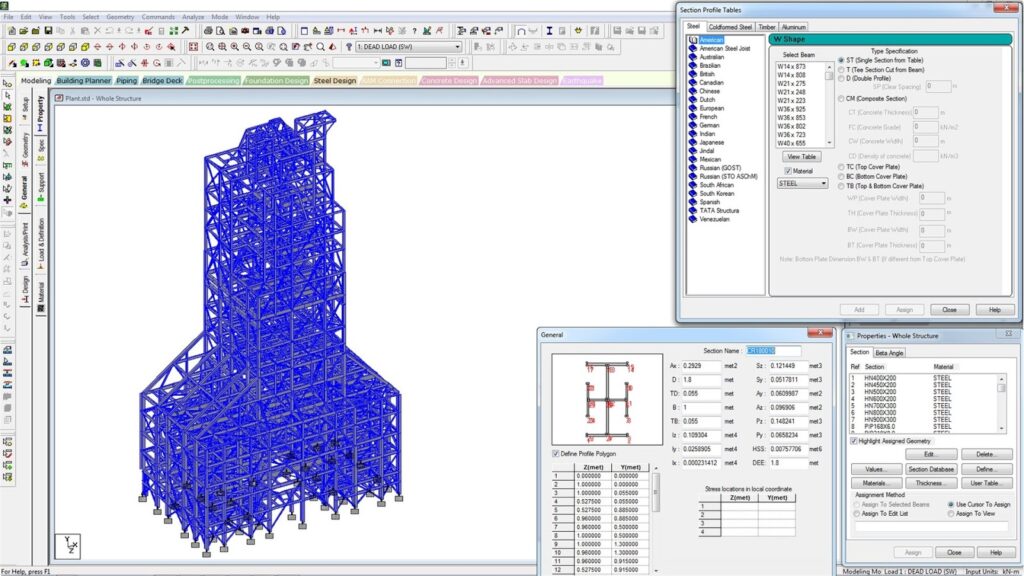
With STAAD, you can model, analyze, and design structural projects using any material and anywhere in the globe. It provides you with an adaptable way to handle all of your structural engineering requirements starting at the foundation. It is a complete structural finite element analysis and design program.
STAAD Pro is the baseline product, there are other offerings such as STAAD Pro advanced and the Structural Design Suite. And with seamless integration capabilities with these other Bentley products, STAAD. Pro fosters enhanced interoperability and collaboration throughout the design process.
More information on STAAD Pro is obtainable from: STAAD | Bentley Structural | Infrastructure Software Company
Tekla Structural Designer
Tekla Structural Designer (TSD) is a structural engineering software developed by Trimble Inc and used for analysis and design of building structures. This software integrates design and analysis into a single, simple, and effective model-based procedure. Regardless of the structural material and delivers a more expedient, safe, and logical design.
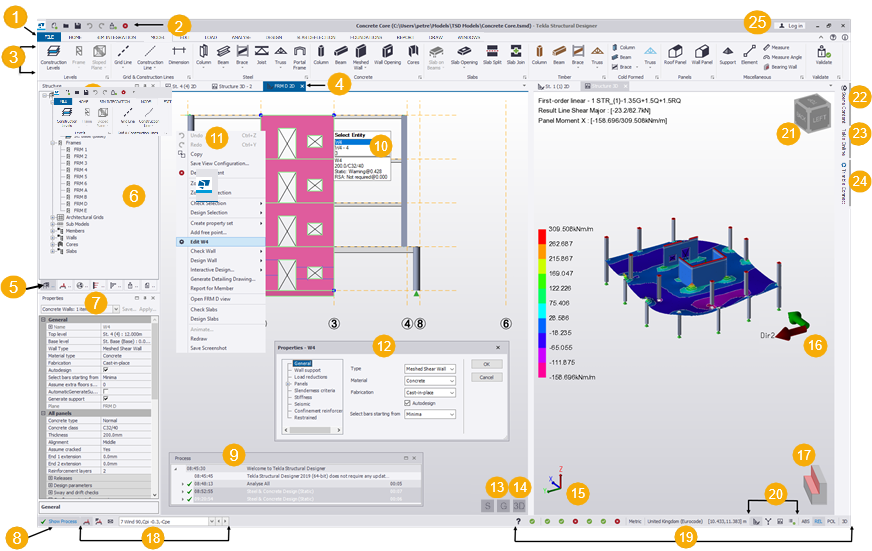
TSD has arguably the most intuitive interface currently, engineers can easily analyze and optimize structures, ensuring they meet performance and safety criteria. TSD excels in handling complex geometric configurations and load conditions, making it versatile for a wide range of projects. Its strength includes faster design time – which allows alternative schemes to be created and compared to establish the most cost-effective solution; and easy change management – which allows a model to update automatically when there is a change.
Another strength of TSD is with respect to its Interoperability. TSD is BIM enabled and integrates very well with product offering from Autodesk, Bentley and other Trimble products.
More information on Tekla Structural Designer is obtainable from: Tekla Structural Designer – Design and Analysis Software | Tekla
Robot Structural Analysis Professional
Autodesk’s Robot Structural Analysis Professional is a comprehensive software solution that provides advanced analysis and design tools for structural engineers. Offering parametric modelling capabilities and a range of analysis options, the software is suitable for projects of varying complexity.
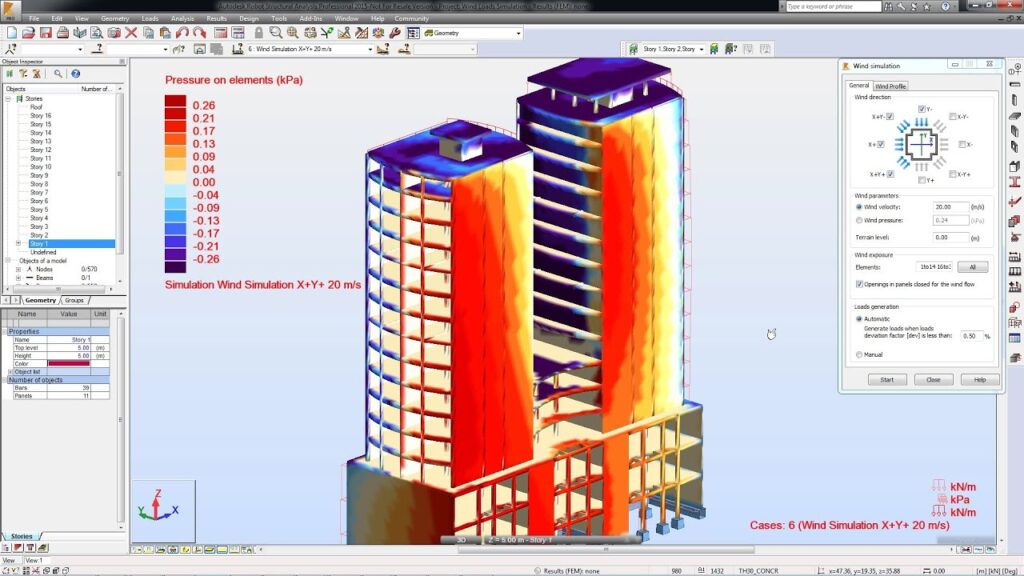
Robot has an integrated BIM workflow with Revit and other Autodesk products, it’s having an extensive analysis capability; able to carry out static, modal and non-linear analysis. It also has an extensive library of country-specific design standards.
A prominent capability of Robot is its ability to conduct a wind load simulation. With the wind load simulator, a designer is able to simulate wind flow around his model and generate the wind loads automatically. With the help of this wind simulation technology, which functions as a wind tunnel, you can see colourful pressure maps on your model and comprehend the wind’s impacts even on intricate structures.
More information on Robot Structural Analysis Professional is obtainable from: Robot Structural Analysis Professional | Download & Pricing (autodesk.com)
Midas Civil
Midas Civil, developed by MIDAS IT, specializes in the analysis and design of bridges and civil structures. Recognized for its powerful finite element analysis engine, Midas Civil allows engineers to simulate real-world conditions and optimize bridge designs for performance and safety. The software’s intuitive interface and extensive design code support make it an invaluable asset for engineers engaged in the planning and execution of transportation infrastructure projects.

More information on Midas Civil is obtainable from: midas Civil (midasoft.com)
RAM Structural System
For very large projects, it might be necessary to split up the design process into individual component rather take on the project as a whole. This is where RAM structural system by Bentley System comes to play.
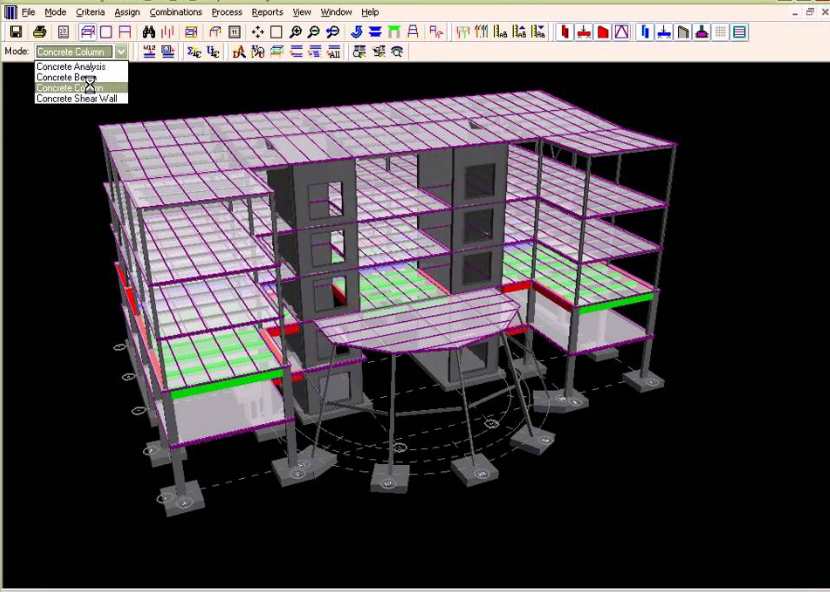
RAM Structural System is a comprehensive software solution for the analysis and design of building structures. Its intuitive modelling tools and advanced analysis capabilities helps to streamline the design process, enabling engineers to navigate efficiently through various stages of project development.
Integration with other Bentley products also enhances collaboration and coordination among different disciplines during the design and construction phases.
More information on RAM Structural System is obtainable from Structural Design Software | Bentley Systems
Dlubal RFEM:
Dlubal RFEM is a versatile software used for structural analysis of structures. Being an only analysis software alone, RFEM can immediately be thought to fall short of most typical structural engineering software with design capability. However, this is compensated for by being a structural analysis powerhouse.
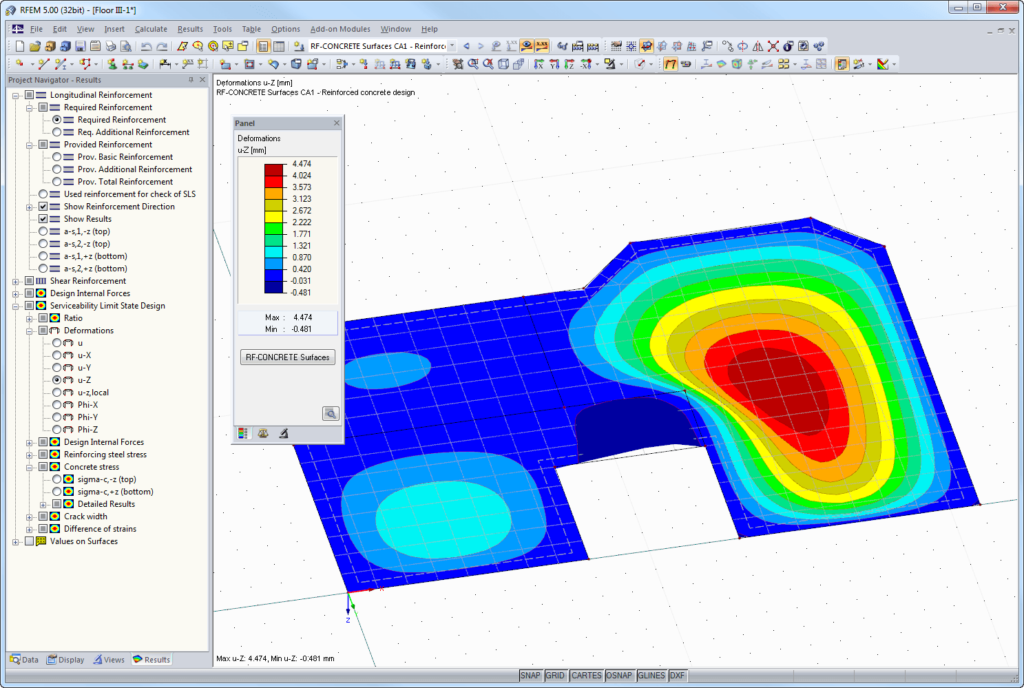
RFEM allows you to define structures, materials, and loads of planar and even spatial structures consisting of plates, walls and shells. Furthermore, you can create combined structures as well as model solid and contact elements. Deformations, internal forces, stresses, support forces, and soil contact stresses may all be calculated with RFEM. Load wizards make environmental factors like wind and snow easier to understand. You may quickly do extra analyses and design checks in accordance with different standards (for instance, in reinforced concrete, steel, and timber buildings) thanks to the add-ons that are directly incorporated into the application.
Dlubal RFEM’s emphasis on user-friendly modelling and visualization makes it an attractive choice for engineers seeking a flexible and efficient solution for their structural projects.
More information on Dlubal RFEM is obtainable from RFEM 6 | FEA Software | Dlubal Software
Oasys GSA:
Oasys GSA (General Structural Analysis) is a comprehensive software package for structural analysis and design. Known for its advanced analysis capabilities, including nonlinear and dynamic analysis, Oasys GSA is particularly valuable for engineers working on projects with unique or challenging structural requirements. The software’s parametric modelling and visualization tools contribute to a more efficient and insightful design process.
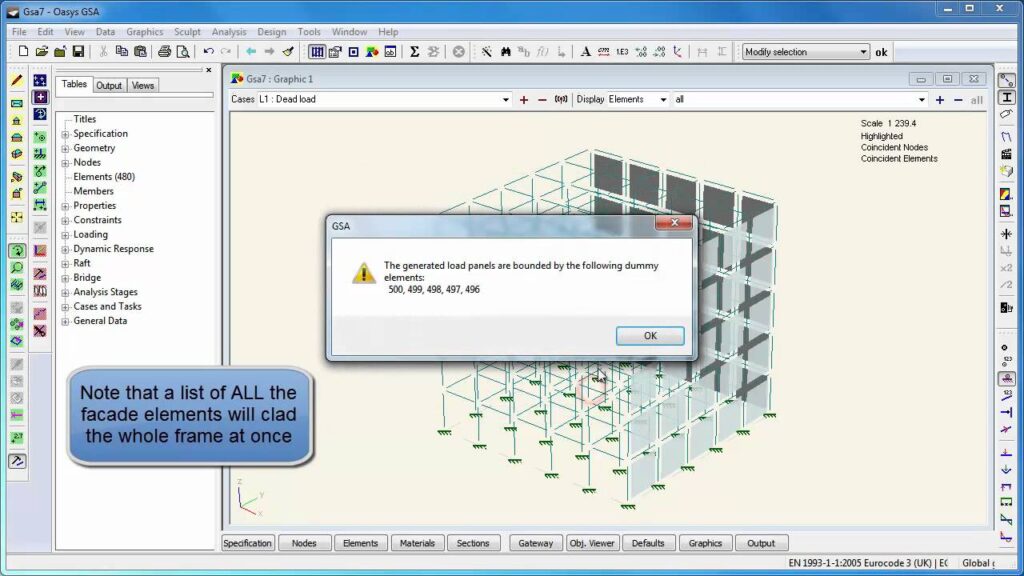
GSA enables the user to alter and verify the model using a broad range of analysis choices, such as a model debugging stability analysis, modal analysis, linear buckling, footfall vibration analysis, explicit nonlinear analysis, and form-finding capabilities to satisfy the demands of any project.
More information on Dlubal RFEM is obtainable from GSA: Structural Analysis and Design Software | Oasys (oasys-software.com)
Tekla Tedds
For structural engineers who prefer hand calculations with less automation, Tekla Tedds might be a valuable software solution. Tedds is another product of Trimble Inc. It offers a comprehensive library of pre-written structural and civil engineering calculations, enabling engineers to quickly generate accurate and standardized reports. With an intuitive interface, it simplifies complex calculations for various design codes and standards.
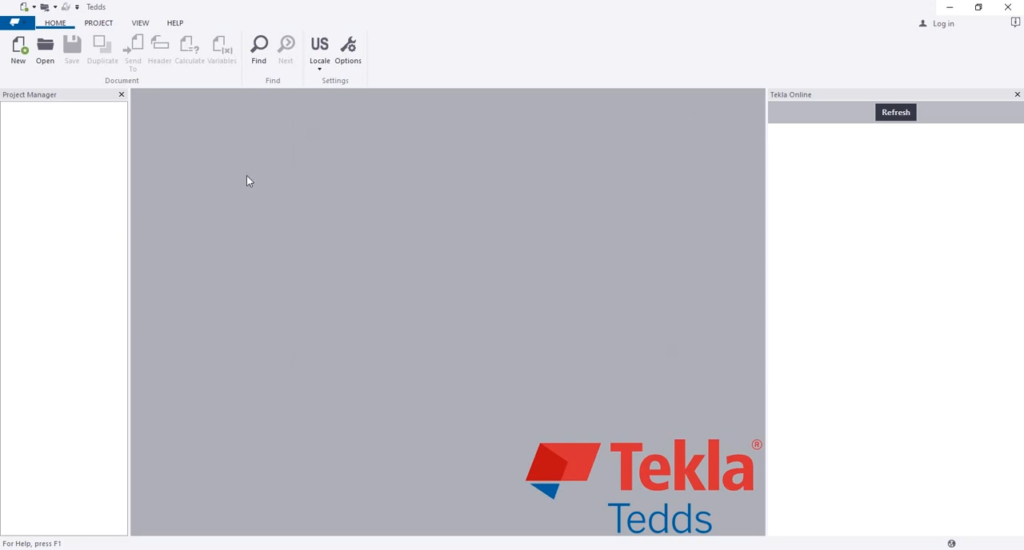
Tedds biggest asset is the Tedds for word add-on which allows users to write their own customized calculation in Microsoft word which can then be saved in the library and used for repetitive calculations.
More information on Tekla Tedd is obtainable from Tekla Tedds – Structural Analysis Software | Tekla
See: Selecting the Right Structural Engineering Software
Conclusion
Very often a very versatile engineer will find himself using several software depending on the type of the project they are involved with. What is important however, is that the designer has fundamental knowledge of the underlying principles behind the operation of each software, understand their limitations and be able to interrogate the results they produce for flaws.